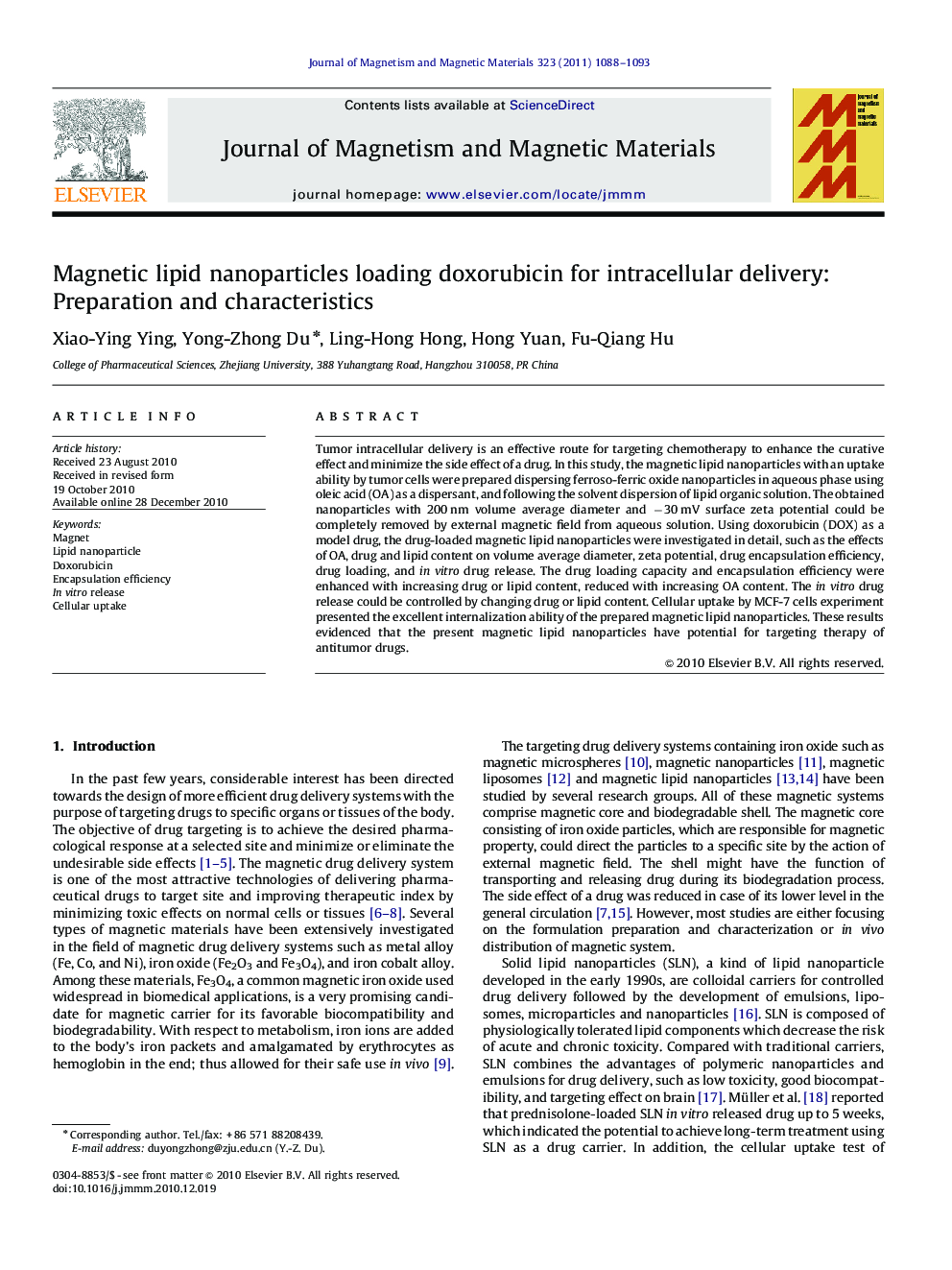| Article ID | Journal | Published Year | Pages | File Type |
|---|---|---|---|---|
| 1800503 | Journal of Magnetism and Magnetic Materials | 2011 | 6 Pages |
Tumor intracellular delivery is an effective route for targeting chemotherapy to enhance the curative effect and minimize the side effect of a drug. In this study, the magnetic lipid nanoparticles with an uptake ability by tumor cells were prepared dispersing ferroso-ferric oxide nanoparticles in aqueous phase using oleic acid (OA) as a dispersant, and following the solvent dispersion of lipid organic solution. The obtained nanoparticles with 200 nm volume average diameter and −30 mV surface zeta potential could be completely removed by external magnetic field from aqueous solution. Using doxorubicin (DOX) as a model drug, the drug-loaded magnetic lipid nanoparticles were investigated in detail, such as the effects of OA, drug and lipid content on volume average diameter, zeta potential, drug encapsulation efficiency, drug loading, and in vitro drug release. The drug loading capacity and encapsulation efficiency were enhanced with increasing drug or lipid content, reduced with increasing OA content. The in vitro drug release could be controlled by changing drug or lipid content. Cellular uptake by MCF-7 cells experiment presented the excellent internalization ability of the prepared magnetic lipid nanoparticles. These results evidenced that the present magnetic lipid nanoparticles have potential for targeting therapy of antitumor drugs.
Research highlights► A simple solvent diffusion method was developed to prepare magnetic lipid nanoparticles. ► The doxorubicin-loaded magnetic lipid nanoparticles could be controlled by preparation recipe. ► Magnetic lipid nanoparticles had internalization ability into tumor cells.
